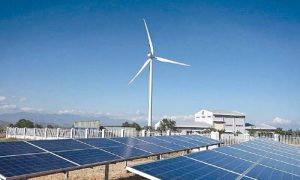Engineering Post’s Report
Manufacturing holds a dominant position with Pakistan’s industrial sector, contributing 12.01 percent to the country’s Gross Domestic Product (GD).
Pakistan’s national accounts divides manufacturing sector into three main categories: Large Scale Manufacturing (LSM), Small Scale Manufacturing (SSM), and Slaughtering.
LSM is comprised of businesses with ten or more employees and accounts for 78.4 percent of the Quantum Index of Manufacturing (QIM), which measures LSM performance. The QIM is derived from the Census of Manufacturing Industries which was conducted in 2015-16. SSM information is based on a survey conducted in 2015 and it covers both industrial and both industrial and household units engaged in manufacturing with fewer than ten employees . On the other hand, slaughtering sectors performance, according to the experts concerned, is calculated using a method that measures the value added of the sector’s performance. The mining and quarrying sector contributes around 1.6 percent of GDP and includes activities related to the extraction of natural resources and construction materials.
The global economy was recovering well until the Russia-Ukraine conflict began in February 2022, which unfortunately still continues, which had disrupted the restoration of global supply chains that were earlier impeded by lockdowns and limited trade traffic.. The conflict as such caused the prices of essential commodities to rise sharply , strengthening inflationary pressures triggered by the global economic recovery backed by massive fiscal and monetary policies in 2020. The central banks had initially overlooked these pressures but eventually realized the dire need for a robust monetary policy response, This response, however, being crucial in nature as on one side, it drove capital to the US markets, leading to the US dollar appreciating and widening current account deficits in net importing economies. On the other end, it dampened the overall economic activities.
Pakistan being among the frontier economies suffered the most, because with weak global demand, the country faced a triple whammy of higher inflation, currency depreciation and widened current account deficit in the start of FY2023. These factors had left the federal government with limited room for maneuvering on account of somewhat tight financial conditions while aiming for ensuring fiscal discipline. Complicating matters further, the flash flood further exacerbated the prevailing challenges resulting in supply disruptions and quite significant losses of crucial crops in the country. The year was marked by tumultuous events and challenges, making it a rather turbulent year for Pakistan.
The proliferation of risks, including global economic slowdown and food damages, coupled with the restrictive policies of the State Bank of Pakistan. in order to set the balance of payments right and control inflation at the earliest, such as high interest rates, import restrictions, and closure of Letters of Credit (LCs) had created headwinds for the business and consumer confidence as well as the investment.
Thus, the industry in Pakistan was weighed down by various domestic and external factors leading to a slow down in its performance in FY2023, the experts concluded.








